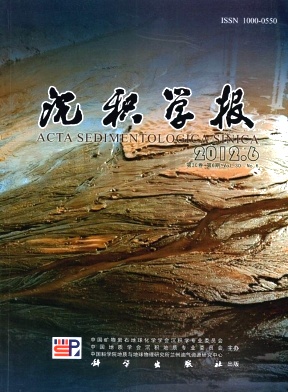Paleoseismic Depositional Events of the Famous Geological MountainMantoushan and Its Vicinity in the Early Cambrian
- Publish Date: 2012-12-10
-
Key words:
- paleoseismic depositional event /
- synsedimentary deformation structure /
- the Early Cambrian /
- Mantoushan /
- Jinan
Abstract: The well known geological mountainMantoushan is located in the mountain area of southern Jinan city. The standard (stratotype) profile from the Longwangmiao Stage to the Zhangxia Stage of the Lower middle Cambrian of the North China is established here. Here, geological traces are so rich and research history is so long that Mantoushan mount is famous at home and abroad. The Jinan area lies in the west side of the Tanlu fault and seismic zone. During the early Cambrian, a set of terrigenous clastic sediments consisted of sand and mud intercalated with carbonate were deposited in the western Shandong region including Jinan city where was littoral, sabkha and epicontinental sea, which stratigraphic sequence, from bottom to top, was the Liguan Formation (∈1l), the Zhushadong Formation((∈1l) and the Mantou Formation(∈1-2m). By means of field observation and labexammination, various synsedimentary deformation structures caused by earthquakes, namely seismites, were identified in the Lower Cambrian of Mantoushan mount, eastern hill to the Qingyang village, Hongyegu valley and Gunqiushan mount, and so on. The synsedimentary deformation structures discovered by the study include convolute deformation (seismic fold), graded microfault, gliding structure, slump fold, load structure, pillow mass, mixed insertion sediment, soft siliceous vein, diapir structures of soft siliceous layers, deformation of diatoms stramatolitic, settlement structure, thixotropic wedge, boudinage, seismic crack or fissure, shattered breccia and seismic breccia, and so on. Most of them belong to plastic deformation structures of softsediments, but shattered breccia, seismic breccia and seismic crack or fissure are brittle deformation structures of semiconsolidated to uncompletely consolidated sediments. Their characteristics and formation mechanism are detailed in this paper. The thixotropic wedge has been reported firstly in China. Some thixotropic wedge and settlement structures developed in dolomite with siliceous layers, and their original sediment was dolomitic limemud with soft siliceous layers. By triggering of strong earthquake, soft siliceous layers became more soft because viscosity of siliceous sediment (SiO2·nH2O) get diminished, meanwhile dolomitic limemud was liquefied. Under vertical shock force, soft siliceous layers were cut off, and subsequently sinkage of disconnected siliceous layers formed settlement structure, which extended down so that disconnected siliceous layers converged to result in the formation of thixotropic wedge. Differences of thixotropic wedge, seismic crack and filling structure of seismic crack are as follows: (1) Thixotropic wedge are one of plastic deformations which are formed for viscosity of soft nonliquefied sediments is diminished and their rheological property is enhanced (thixotropy) by earthquake triggering. With settlement structure going on to deep, thixotropic wedge was formed. Formations of wedge body and it's host rock are synchronous; (2) Seismic crack is a tensile fissure of the "V" shape,which belongs to brittle deformation of semiconsolidated or incompletely consolidated sediment formed by the earthquake action; (3)The filling structure of seismic crack is usually wedge yet, but its filling is soft sediment or brittle seismic breccia. In general, the formation process of wedge body is out of synch with that of the crack. On the basis of the distribution of palaeotectonic plates and seismic zones in the early Cambrian, it is considered that these seismic sedimentary traces are records of the intraplate ancient earthquakes during the early Cambrian, and it is can be deduced that they are response to tectonic activities of the PaleoTanlu fault zone. The discovery of paleoseismic event records and the interpretation of this paper enrich the geological sciences connotation of the southern Jinan area, especially the Mantoushan mount.
| Citation: | Paleoseismic Depositional Events of the Famous Geological MountainMantoushan and Its Vicinity in the Early Cambrian[J]. Acta Sedimentologica Sinica, 2012, 30(6): 1021-1031. |






 DownLoad:
DownLoad: